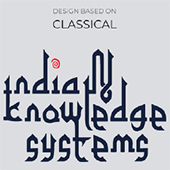The project extracts theories and principles from ancient Indian Knowledge Systems to teach principles of design, which can be applied in the modern world. The main principles of ancient Indian design include:
1. Grids, Ratios and Scale: This section would focus on the basic underlying grids and ratios that govern Indian arts and architecture, like the mandalas, 5:4 ratio, and so on.
2. Patterns/Fractals and Symbols: This section focuses on motifs, their meanings and the layers of abstraction, discussing examples like Swastik and Rangoli.
3. Anthropometry and body mappings: This section aims to understand the basic human body and its movements for a potential application in modern ergonomics.
4. Emotions, basic principles and design guidelines merging from study of the ancient: This part aims at understanding and explaining abstraction and transitory emotions using the deeper principles of Indian art, by diving into the speculative thought process that was behind creation of these principles.
The uses of these principles in ancient architecture (eg. temple architecture), product design and other sastras are discussed, along with their applications in modern fields like storytelling, game design (strategies), graphic design and modern architecture. The discussion starts with the basic principles of Indian arts and crafts, and how they translate to what we see around us.

